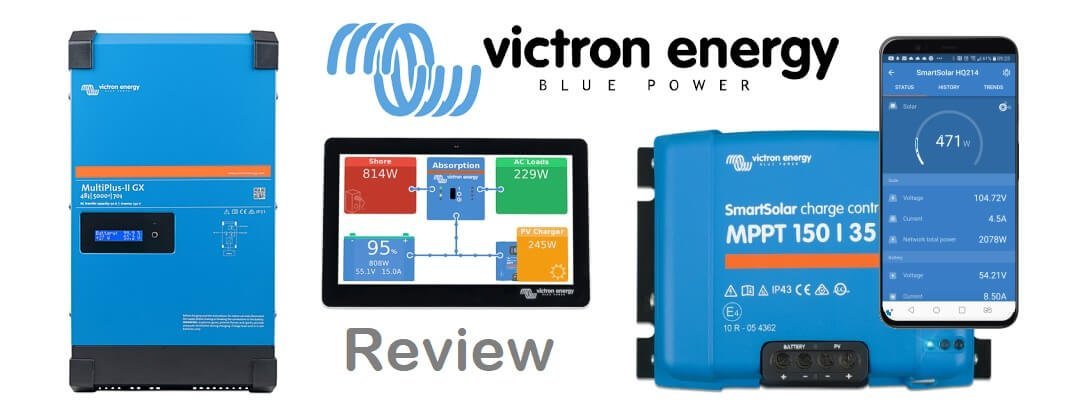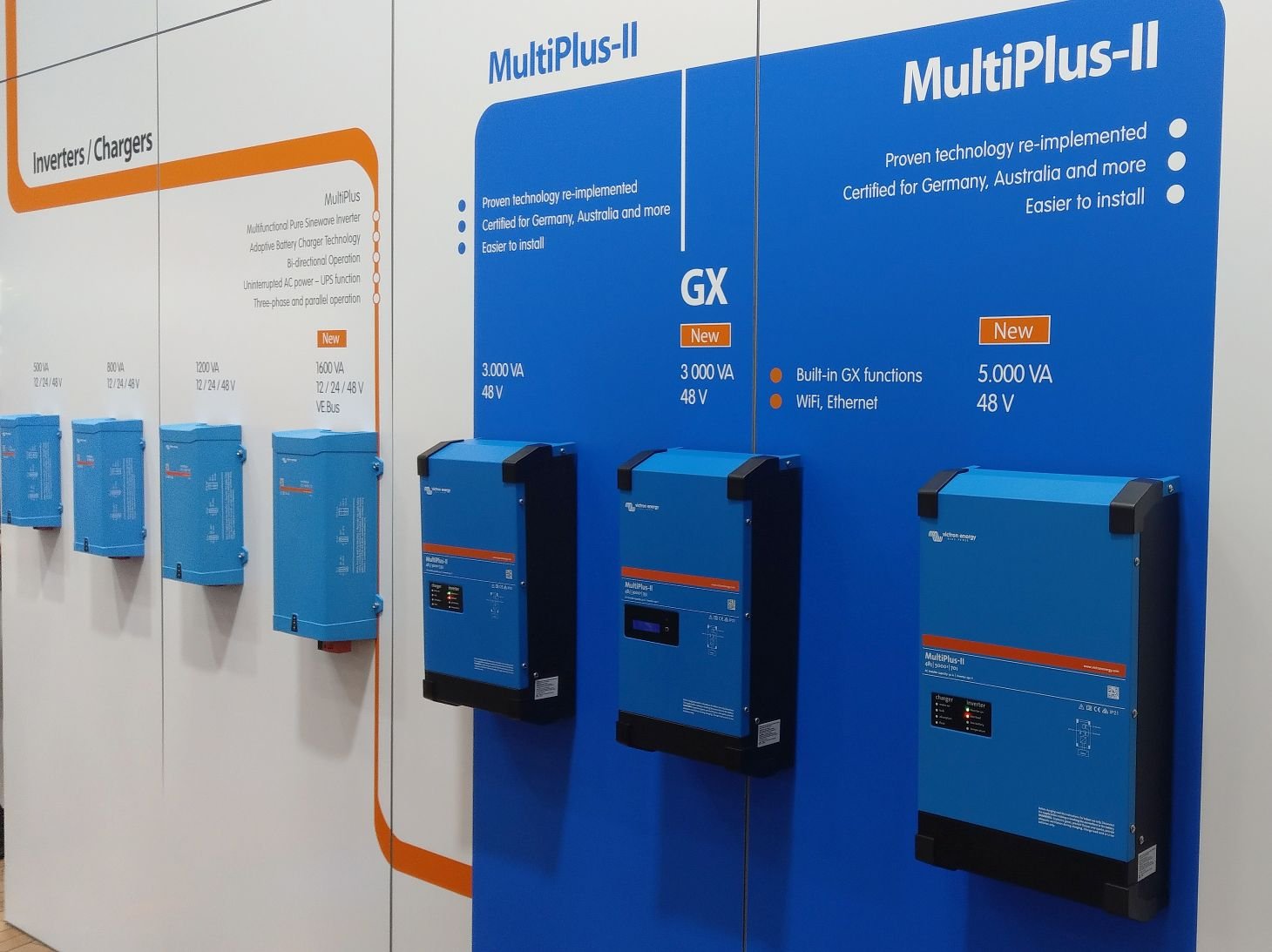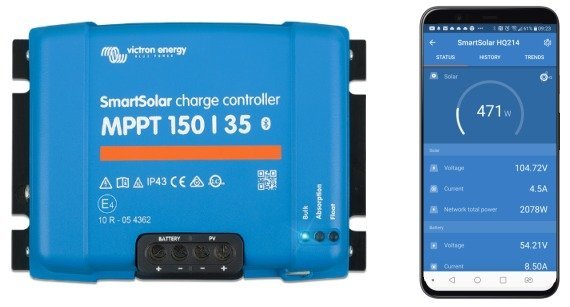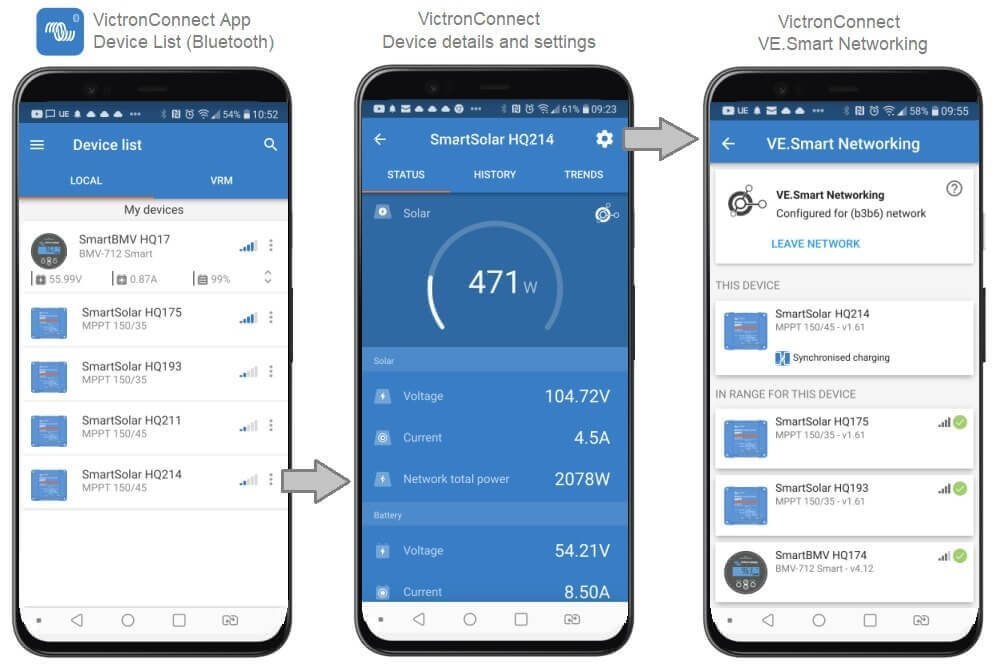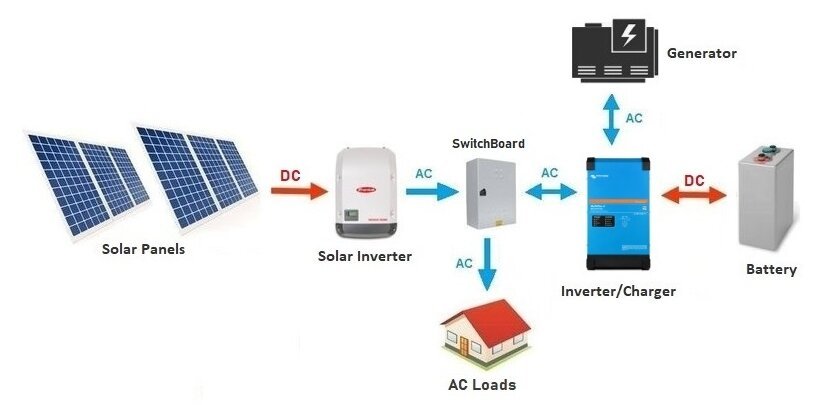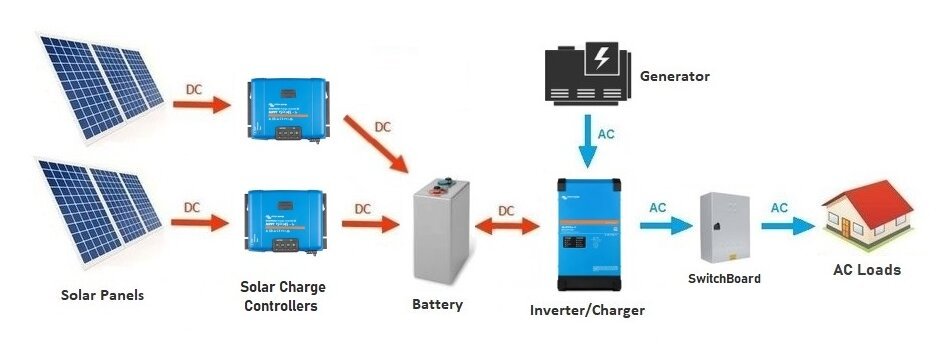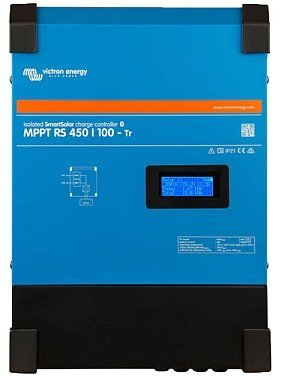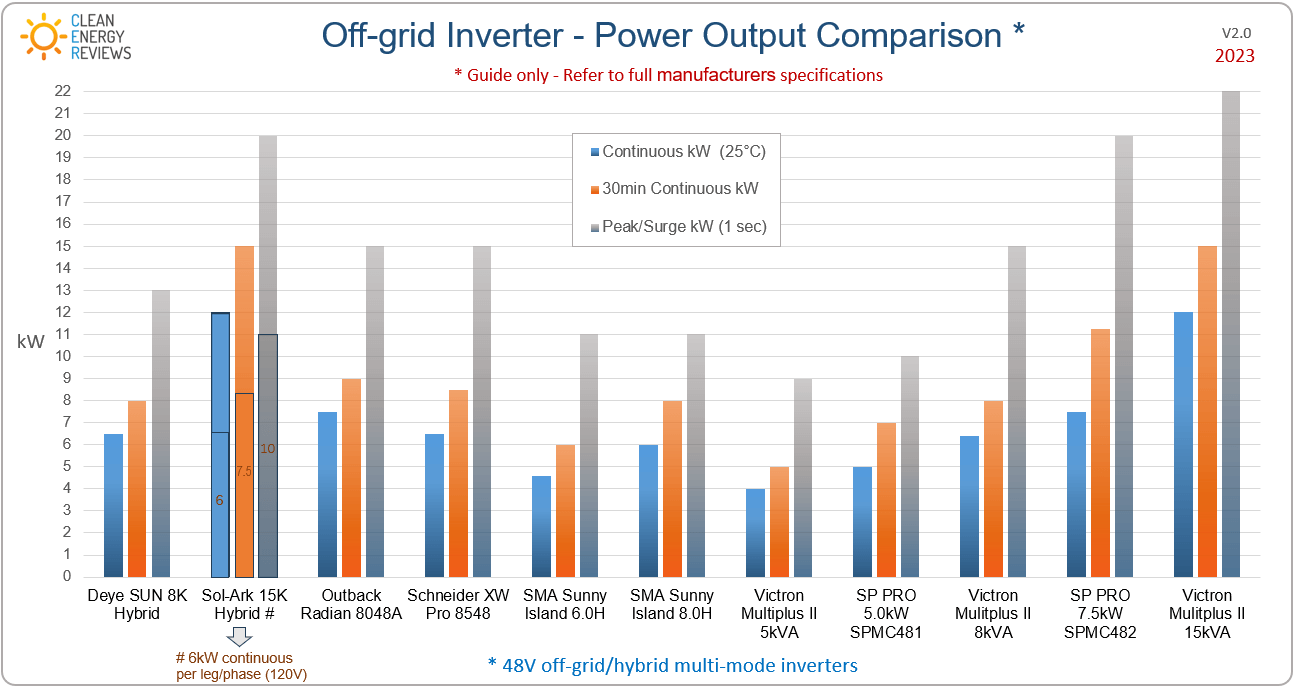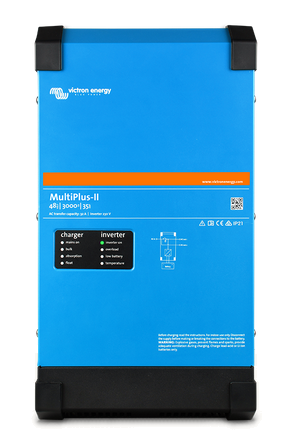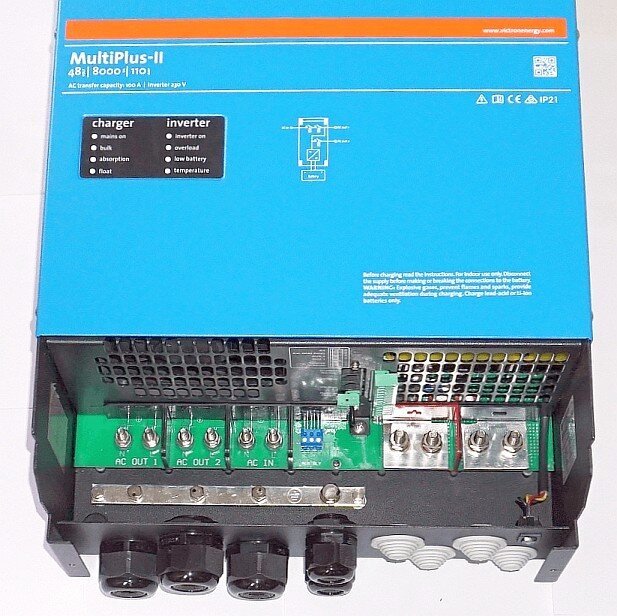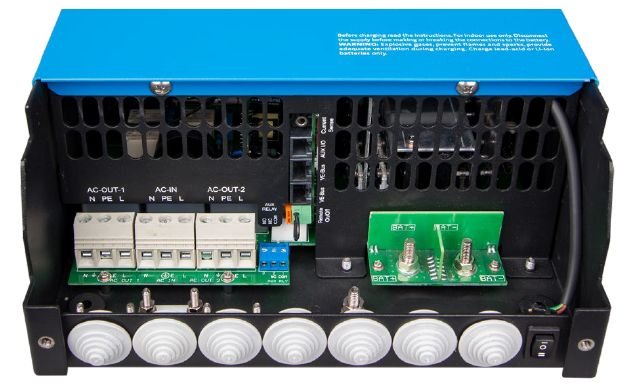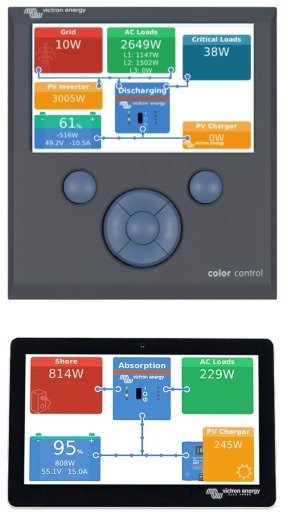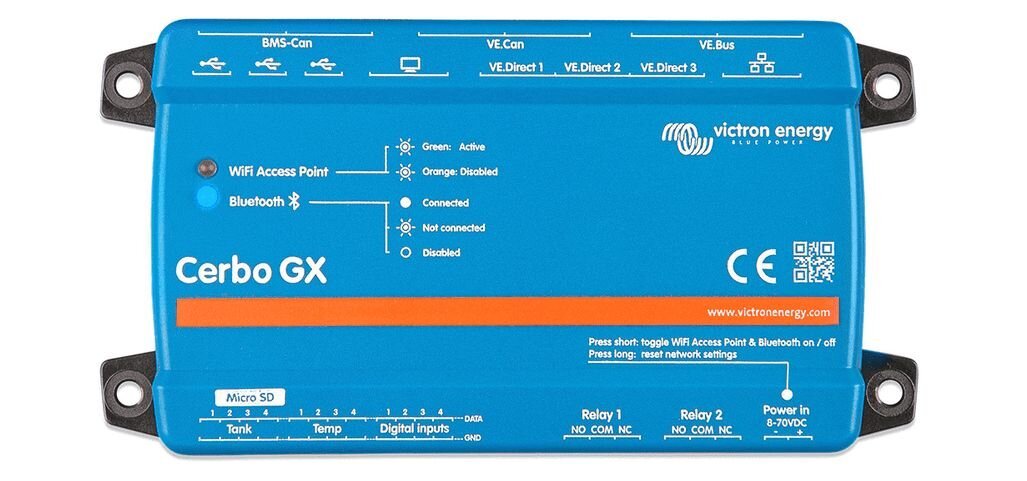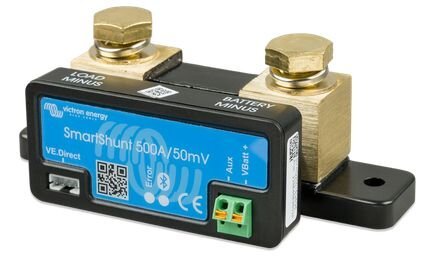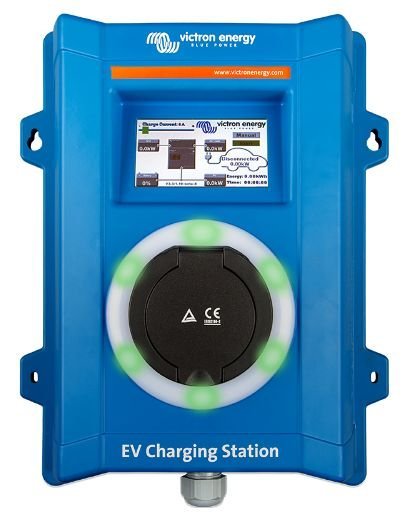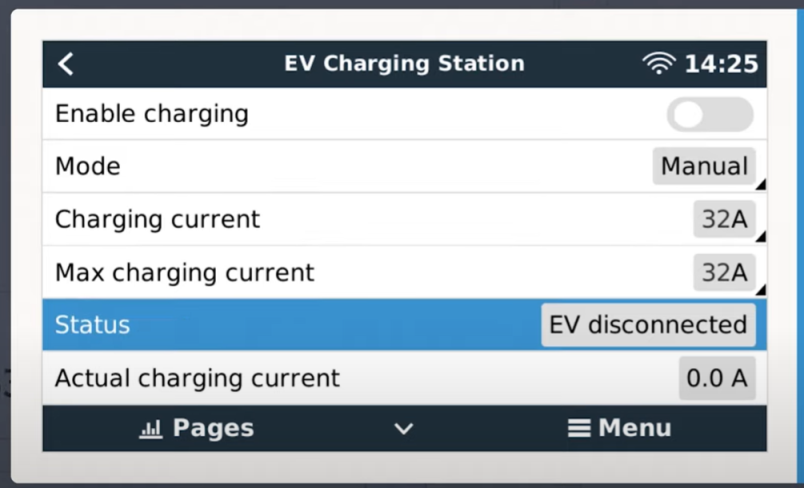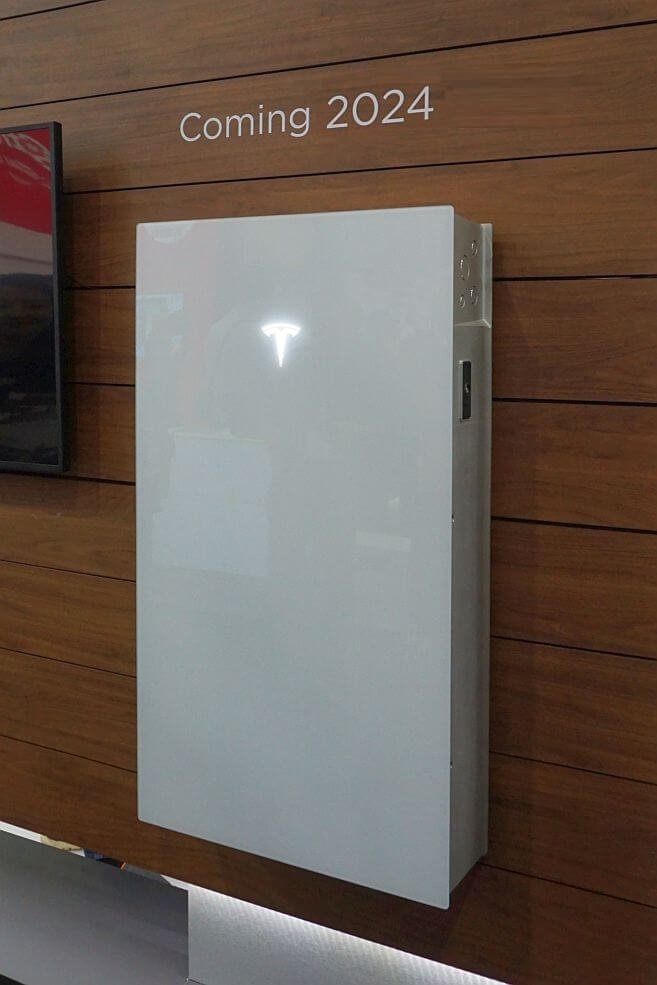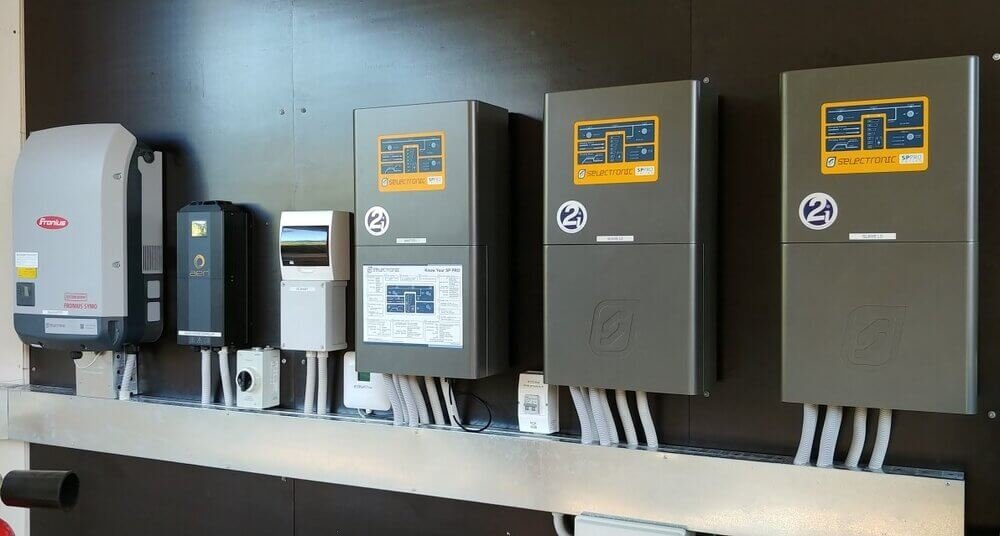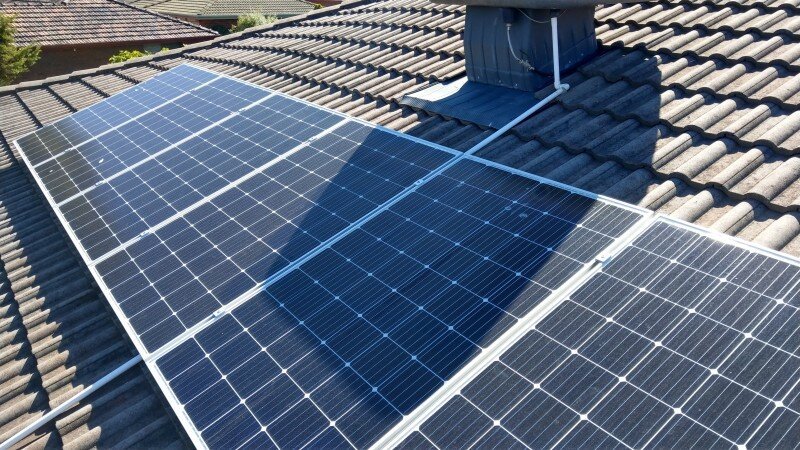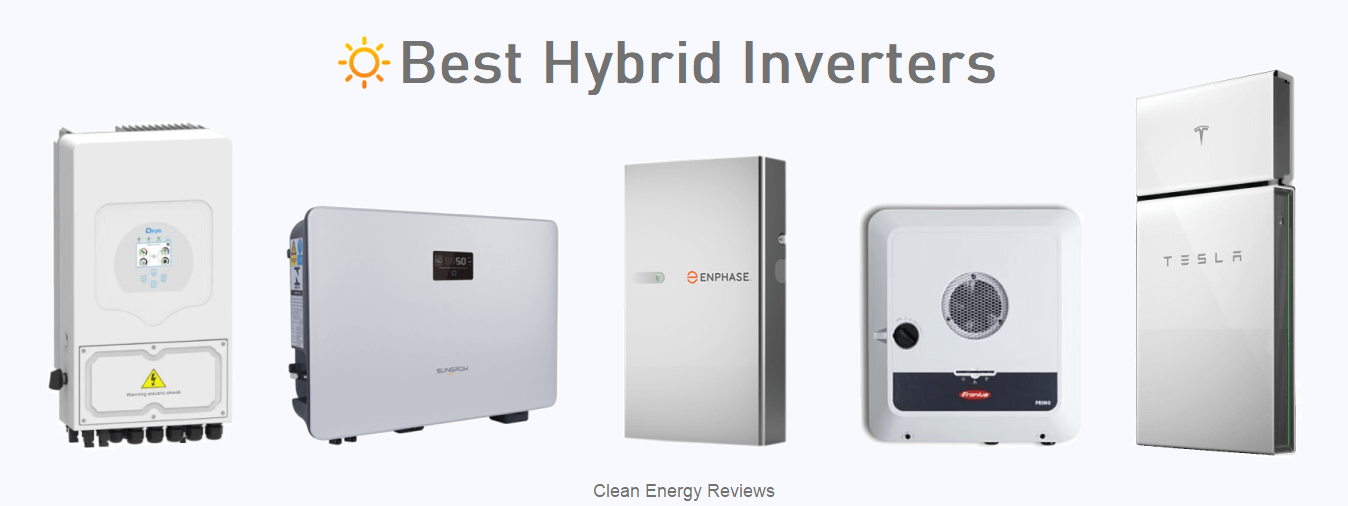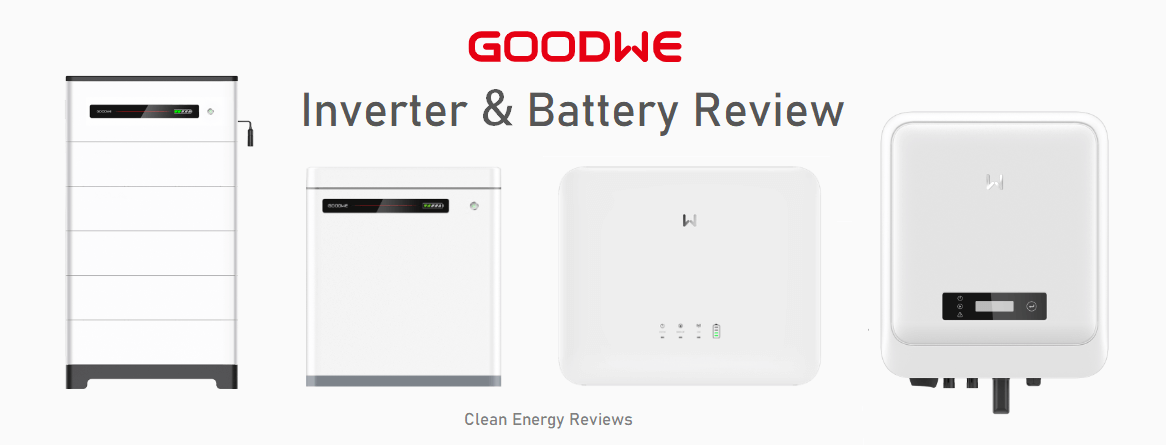Victron Energy Review - Smart solar battery systems
home > battery storage > best off-grid systems > Victron Review
Victron Energy, based in the Netherlands, has been manufacturing power conversion equipment since 1975 and become well-known around the world for producing reliable off-grid battery inverter chargers and a wide range of quality, affordable solar controllers. Victron especially shines in the automotive/RV/boating market, where micro power systems are common and are one of a few high-quality manufacturers in this highly competitive market.
In recent years, Victron's higher power battery inverter-chargers, the MultiPlus and Quattro range, and an array of smart energy management devices have started to compete in the surging home battery storage market with the likes of Tesla Powerwall 2. In the past, Victron products have been designed specifically for off-grid installations, but with the release of the Multiplus II, there appears to be more focus on home batteries and hybrid systems.
Huge Range of Solar and Battery Products
Victron Energy has possibly the widest variety of solar products of any manufacturer, with everything from tiny solar controllers up to large 15kVA grid-interactive inverters. Plus, a seemingly unlimited combination of add-ons and accessories to create everything from simple battery monitors to remote AC or DC-coupled off-grid power systems.
Main products manufactured by Victron Energy
Battery inverters
Inverter-chargers
Grid-Interactive inverter-chargers
Battery chargers
Solar charge controllers (PWM & MPPT)
Battery monitors
Remote system monitoring
Battery balancers and accessories
Batteries - Lead-acid & lithium-ion
EV Chargers (NEW)
Latest Victron products
One thing that sets Victron Energy apart from most other manufacturers is that they continually develop new innovative products and update existing hardware and software with smart new features via free remote firmware updates. As inverter and power conversion technology has improved substantially over recent years, so has Victron's range of inverter-chargers and MPPTs. Below are just a few of the more recent products.
Multiplus II 8000VA, 10000VA and 15000VA inverter-chargers.
SmartSolar MPPT RS 450/100 and 450/200 with multiple MPPT inputs.
Ekrano GX - The Latest GX product with a 7-inch touchscreen display and a full range of connections and interfaces, including VE.direct, VE.Can (x2) and VE.Bus.
Multi RS Solar Hybrid inverter now with dual 450V MPPT trackers.
Victron EV charger - On-grid and off-grid EV charging.
High-performance solar charge controllers
Victron SmartSolar MPPT and Victron connect app
Only a few companies have a reputation for quality in the world of cheap eBay solar charge controllers, and this is where Victron Energy stands out from the crowd. Victron MPPT solar charge controllers are more expensive than much of the competition, but you get a lot more bang for your buck. However, the Victron controllers are still reasonably priced, and in my experience, it is worth spending a little more for quality and reliability when working with solar.
The Victron SmartSolar series MPPTs are available in various sizes with input voltage (Voc) limits from 75V up to 250V (450V on the RS series MPPTs described later). Current ratings also range from 15A to 100A, meaning a large 5kW solar array can be controlled by a single 100A MPPT charge controller (48V). Solar oversizing is also no problem for Victron MPPTs, with up to 200% oversizing allowed, provided you have adequate cooling around the MPPT and do not exceed the maximum allowable input voltage (Voc).
Part of the huge range of Victron MPPT Solar charge controllers - See the full Victron range here
Besides Victron, there are several high-quality solar charge controller manufacturers, including Outback Power, Morningstar, MidNite, and Australian-made AERL, which have been on the market for many years. Personally, I had been using the Morningstar controllers for a long time with no major problems, but I switched to Victron due to the vast range of products and smart remote monitoring features not offered by Morningstar. Also, I am unaware of any other manufacturer besides AERL, which offers a 5-year or greater warranty on solar charge controllers in Australia.
Smart control - VictronConnect App
It is not just the hardware that makes Victron MPPTs stand out from the crowd. The VictronConnect App is undoubtedly one of the best and most intuitive Apps on the market, offering advanced monitoring and control features, including precise charge settings for a wide variety of battery types. One of the more impressive features is the VE.smart networking which enables multiple MPPTs to synchronise the charging of a common battery bank using a Bluetooth mesh. The network also syncs with a Smart Victron BMV battery monitor to deliver extremely accurate charge control and ensures all MPPTs are operating at precisely the same charge voltage.
The VictronConnect App displaying the VE.Smart Networking feature used to synchronise battery charging using multiple MPPTs
MPPT Controllers Vs Solar Inverters
Solar charge controllers, also known as solar regulators, were once the only option for off-grid power systems and are used to build what is known as a DC-coupled system. Simply put, DC-coupled systems use MPPT solar charge controllers to charge a battery directly from any number of solar panels, which is extremely efficient. The inverter-charger supplies power to the AC loads and charges the battery from an AC source (grid or generator). On the other hand, AC-coupled systems work together with one or more common solar inverters that can power AC loads directly, while excess energy is used to charge the battery via the inverter-charger.
AC-coupled solar
Basic AC-coupled solar system diagram with a Fronius Solar inverter AC coupled with an Inverter/charger
Nowadays, many larger off-grid installations over 6kW use solar inverter/s in what’s known as an AC-coupled system due to the simplicity of using grid-tie solar inverters together with an inverter/charger like the Victron Multiplus II. Common grid-tie solar inverters are available in much larger sizes with higher string input voltages (up to 1000V), allowing for much longer strings of panels that are simpler and easier to install, although the higher voltages are far more dangerous and should only be installed by trained solar professionals. Most solar inverters also contain dual MPP trackers so two different strings of panels at different orientations or lengths can be used.
Using frequency shifting to regulate charging
Unlike DC-coupled off-grid solar systems, one of the complexities with AC-coupling is regulating the solar inverter output when the battery is full and the load is low. This is where inverter ramping, or throttling, using frequency shifting is required to enable the solar inverter to adjust its power output. Although this is not as precise and fast as MPPT solar charge controllers when charging, and it can affect some sensitive electronic appliances. Despite the trend towards AC coupling on larger PV systems, Victron doesn’t manufacture solar inverters. Fortunately, for larger systems, the Mulitplus and Quattro Inverters are compatible with the well-regarded Fronius solar inverters (up to 8.2kW single phase) and SMA, FIMER and SolarEdge. Several other brands, including Delta, are compatible with frequency shifting, but always check the inverter model with the manufacturer. SolarEdge supports off-grid operation using an Alternative Power Source mode (APS) setting, which supports an extended frequency & voltage operating range.
DC-Coupled Solar
Basic DC-coupled system diagram using MPPT charge controllers inverter coupled with an Inverter/charger
DC-coupling solar using Victron MPPTs provides the most precise battery charging and maximum flexibility when designing solar arrays, especially using multiple roof aspects or orientations. Using Victron SmartSolar MPPTs and the VE.smart networking feature enables extremely accurate battery charging using multiple MPPTs to synchronise the charging of a common battery bank.
Until recently, the most powerful Victron MPPT solar controllers were limited to 250V DC, meaning a maximum of 6 solar panels can be linked together in series since most panels have an open-circuit voltage (Voc) of 38-45V. This isn’t a huge problem for smaller systems below 5kW, but for larger systems, multiple strings (groups of panels in series) will need to be linked together in parallel, which requires string fusing and larger cables to carry the higher current.
High-power 450V MPPT charge controllers
The new MPPT RS charge controllers from Victron allow for much longer strings of up to 8 or 9 panels in series. However, several higher voltage MPPT charge controllers, up to 600V, are available from other manufacturers, including Schneider Electric, AERL and Morningstar. Since home battery systems are becoming more popular and MPPT solar charge controllers are very efficient at charging batteries, it may result in DC-coupling using MPPT charge controllers coming back into fashion for large off-grid installations. The shift to larger DC-coupled systems is boosted by Victron’s most advanced charge controller, the SmartSolar MPPT RS 450/200. With a 200A DC output, the new MPPT RS charge controller allows for an impressive 11.5kW of solar on a 48V MPPT controller using the four integrated MPPT’s making it the most powerful 48V MPPT charge controller available.
How do Victron Inverters compare to the competition?
In the Off-grid segment, Victron has gained a lot of ground over the last few years against well-known battery inverter manufacturers SMA in Germany, Outback Power in the US, and Selectronic in Australia. These well-established companies have been building off-grid inverters for years and generally dominated the residential off-grid markets in the US and Australia. However, Victron is very popular in Europe, India and Africa and has a global presence overall. This is especially true in the rapidly growing, DIY, off-grid solar and RV/camper market, where Victron has emerged as a global leader.
In the high-capacity professional off-grid and commercial end of the market, Victron comes up against the big name manufacturers such as SMA, Schneider Electric and Selectronic, who have generally focused on high power and 3-phase systems with parallel inverter integration and more advanced AC-coupled systems. However, Victron inverters and MPPT solar charge controllers are close to the quality and performance of most leading brands.
On-grid - The hybrid (grid-interactive) inverter market is where Victron is still developing with more functionality, especially since teaming up with Fronius, who manufactures possibly the best grid-tie solar inverters available. However, with the many dedicated hybrid and multi-mode inverters already available, it has been more difficult for Victron to break into this area. The Multiplus II and recently released Multi RS Solar have highlighted how Victron is now pushing into this rapidly growing market.
Multiplus II Inverter chargers
Victron Multiplus 2 inverter/charger
The Multiplus 2 inverter chargers from Victron combine the functionality of both the Multiplus and older Multigrid inverter chargers in a new modern design. The now obsolete Multigrid inverter was the first grid-interactive hybrid inverter released by Victron with the ability to 'island' or disconnect from the grid in the event of a blackout (a safety requirement by electricity network operators).
The Multiplus 2 inverter-chargers are now available in four sizes, the smaller 3kVA and 5kVA variants and the recently released, much larger 8kVA and 10kVA variants. All Multiplus inverters incorporate the latest energy management and control features including anti-islanding (internal contactors) and an external current sensor (CT) input designed for use with grid-connected energy storage systems (ESS) for monitoring household energy consumption and providing backup power in the event of a blackout.
Inside the new larger Multiplus II 8000VA inverter charger
Inside the Multiplus II 5000VA inverter
The new Multiplus 2 inverters are slightly cheaper than the older Multiplus models, but this does come at a slight performance cost, with the peak surge power rating being reduced slightly from 6000W to 5500W in the new 3kVA model and from 10000W to 9000W on the larger 5kVA model.
The 8000VA, 10,000VA Multiplus II and, more recently, the 15000VA Multiplus II inverter boosted the range and offered significantly higher continuous power ratings of 6.4kW, 8kW, 12kW consecutively impressive peak ratings of 15kW, 18kW, and 27kW which are well suited to large modern homes. Thankfully, the new Multiplus II inverters feature dual battery terminals, like the older Multiplus model, making connecting batteries and chargers much easier as the terminals can be used as a DC hub.
Download the full specifications here - Victron Multiplus II Inverter datasheet.
Wide range of battery Inverter-chargers
The range of battery inverter/chargers from Victron is just as impressive as the variety of charge controllers. Victron manufactures everything from tiny 0.5kVA inverters up to large 15kVA grid-interactive inverter-chargers. Not only do they have a wide range of sizes but also a multitude of devices designed specifically for various applications. For example, the compact all-in-one units with inbuilt solar charge controllers are perfect for lighting systems, cabins and caravans. The more advanced Victron Multiplus inverters have multiple AC inputs and can seamlessly supply power from the grid or a generator depending on which is active.
The large Quattro range of inverter/chargers are designed for high-end applications requiring advanced power management and incorporate multiple AC inputs and outputs, which can be configured depending on the application. The Multiplus and Quattro inverter/chargers can also be set up in parallel (up to 6 units) for high power output situations or in 3-phase configurations for larger commercial systems.
Victron offer a wide range of inverters designed for mobile, RV, residential and commercial applications
One of the few downfalls of the Victron inverters is the relatively low IP 21 rating (weather rating). This means the inverters must be installed in a protected area such as a garage, shed or dedicated room. Also, as mentioned earlier, the only compatible solar inverter for large AC-coupled systems is the Fronius range, which, although expensive, is one of the best solar inverters on the market.
Careful - Inverter sizing in kVA, not kW
One thing to watch out for is Victron size inverter power output in kVA, not the more common kW (kilowatt) rating. This can be a little misleading when sizing an inverter for your needs; for example, a 3000VA (3kVA) continuous power output inverter generally only outputs 2400 Watts continuously, so approximately 80% of the ‘apparent’ power rating.
Surge power rating and temperature
The surge power rating of the Victron Mulitplus inverters is good, at roughly 2 to 2.5 times the rated continuous power output. This equates to a 2400W (2.4kW) continuous output inverter providing a peak output of 6000W. However, how long the peak output can be maintained is not specified, but based on direct experience, peak power is only supported for 1 to 2 seconds. This is long enough for short start-up surges from pumps and compressors but inadequate for longer-duration peak loads. Part of the reason is due to the smaller transformer size in the Multiplus II inverters compared to the older, heavier Multiplus (gen 1) inverters and other inverters such as those from Selectronic or Schneider. While a smaller transformer is more cost-effective, it cannot support the same load level before an overtemperature warning occurs and cannot sustain higher loads in high ambient temperatures. See the original Victron Multiplus inverter specifications for more details.
Battery Compatibility
The Victron range of inverters are compatible with a wide range of lead-acid and lithium battery systems and the Victron MPPT solar charge controllers are fully programmable to match the charging parameters of almost any battery on the market. However, ‘managed’ lithium batteries require specific communications (Can-bus) which means the battery must be certified to be used with Victron.
Some of the many popular batteries compatible with the Victron inverters and solar charge controllers.
The most popular ‘managed’ lithium batteries, such as BYD and Pylontech, are compatible with Victron. However, not all batteries, such as the LG RESU series, will function with Victron inverters in off-grid installations. Of all the options, Pylontech US batteries seem to be the most well-integrated with the Victron GX systems and are supported by documentation explaining how to connect Pylontech batteries via CAN-bus. You can find all the documentation and guidelines for all the compatible batteries in this link - Victron battery compatibility guide.
Remote Monitoring and Control
In the age of smart apps and cloud monitoring, the ability to remotely monitor and control a system is becoming essential for both solar installers and end users. With this in mind, I would regard the VRM cloud portal along with the Color Control GX, Cerbo and Touch screen options as standout features. The Color Control GX (CCGX) is a small box with a display that connects the Victron VRM internet portal with numerous inputs for all Victron products (inverters, charge controllers, battery monitors etc.) It also allows you to configure and monitor all the individual components directly from the CCGX, as well as logging data and controlling the inbuilt relay.
The Touch 50 and Touch 70 are more compact high-resolution touchscreen displays that are used in conjunction with the Cerbo GX. This allows the screen to be located in a more convenient location away from the main equipment.
The Victron VRM portal shows energy flow and clear graphical system data - plus remote control access (RHS)
Victron has also made the bold move of making their software open source, which means anyone can re-configure the CCGX or reprogram the system to operate on alternative platforms (such as Raspberry Pi). This is clever as it enables people to integrate Victron products into unique customised systems.
In my experience, setting up the VRM was the most seamless and easily configured remote monitoring system I have come across. I believe the Victron GX units outshine the competition, including big names like SMA, Selectronic and Schnieder Electric. The only real downside of the GX units is the rather high price, which is around AU$750 for a Cerbo GX plus the touchscreen colour display. Fortunately, Victron has several alternatives, including the Venus GX and Cerbo GX S, which can be used without a display and include built-in wifi and Bluetooth for close to half the price, bringing it in line with the other manufacturers.
The Cerbo GX monitoring and communications hub. See full details about the Cerbo GX in our Victron video review
New Ekrano GX
The latest release in the GX range is the Ekrano GX, featuring a large 7-inch colour touchscreen display and numerous connections, including VE.direct, USB, VE.Can (x2), VE.Bus, ethernet, Wi-Fi, Bluetooth, 2 x Relays and digital inputs. This new GX unit is similar to the older Color Control GX (CCGX) but has many more features and communication options. However, it also comes with a rather hefty price increase as it currently retails for just over AU$1000 or around US$650. The build quality is excellent with a solid die-cast aluminium housing and high-resolution LCD with dynamic backlight dimming via an inbuilt ambient light sensor. Download the Ekrano GX datasheet.
The latest release is the Ekrano GX monitoring and communications hub with an integrated 7-inch colour touchscreen display.
BMV - Battery Monitoring
Victron’s battery monitoring units (BMV series) are simple, compact current shunts that can be used to monitor everything from a single caravan battery, up to large battery banks for homes or businesses. The addition of an add-on Bluetooth unit allows simple wireless setup and monitoring. The BMV uses the unique VE.Direct interface allowing all Victron products to be interconnected, providing simple setup, communication, and monitoring of multiple products. Victron also provides multiple data interface converters and connections for everything from common USB to VE.Bus, VE.Can and BMS.Can, which is used for managed batteries like LG Chem and BYD.
The new Victron SmartShunt can be used for simple battery montioring via Bluetooth to the VictronConnect app. (No display included)
Victron EV Charger
The latest addition to the Victron product range is an EV charger. The charger looks basic, but unlike most regular EV chargers, it contains a colour touchscreen display. More importantly, it can be fully integrated into the Victron VRM system, meaning it can be controlled and monitored locally or remotely via the VRM. This also means it can be configured to work with Victron off-grid systems and set to not discharge below a specific battery state of charge. The unit works with single-phase and 3-phase power connections with ratings of 7.3kW and 22kW, respectively.
Off-grid operational issues - Testing conducted by Clean Energy Reviews found some technical issues and limitations with the operation in an off-grid system, even with the latest firmware update (1.24). The smart ‘auto’ mode only works for grid-connected systems (with ESS); unfortunately, it does not work off-grid. When using the charger off-grid during the day and the battery reaches the ‘Min SOC’ level, the charger will stop but restart again after a few seconds. This occurs repeatedly every few seconds whenever the solar generation is less than the charge current, which is neither good for the charger nor the vehicle. Hopefully, the Victron team will address this with the next firmware update.
See full details and images in our discussion forum.
Victron EV Charger Key Features
The Victron VRM showing the EV charger control settings.
4.3-inch colour touch screen display
Single-phase (7.3kW) and three-phase (22kW)
Adjustable charge rating up to 32A
VRM full integration (using GX products)
Standard Type 2 socket
Inbuilt Wifi
Non-tethered (Charging cable sold separately)
Download the Victron EV Charger datasheet
Summary
The huge range of Victron MPPT solar charge controllers are very well regarded and are some of the best on the market, especially when it comes to value for money and the huge variety of smart add-ons available. Few manufacturers can compete with Victron's diverse range of products, clever smart control systems (Apps), and base 5-year warranty.
For smaller scale and mobile systems, the Victron Inverters and chargers are some of the highest quality and best value compared to the many cheaper, low-quality options. For larger, more complex hybrid or off-grid systems, the Victron Inverter-chargers are excellent, but I wouldn't go as far as saying they are better than other brands like SMA, Selectronic or Schneider Electric. However, if remote web-based system monitoring is critical, then Victron is definitely one of the best options, and their VRM software is possibly the most advanced and user-friendly platform available.
With the growing popularity of solar energy storage and off-grid systems, the need for smart, remote control and system monitoring will be critical, and it seems Victron Energy is one of the leaders in this field.
Victron 3-Phase AC-coupled solar system - Designed and installed by Transfer Solar and Harpoon Electrics
Article Background
Jason Svarc, Author - When I set up my off-grid home 12 years ago, I chose the simple Victron Pheonix inverter as I was on a tight budget, and it was one of the few quality, affordable battery inverters on the market. After eight years of trouble-free use, I upgraded to the more advanced Victron Multiplus inverter-charger and the colour control GX, which turned out to be an impressive package. Having worked in the solar/energy storage industry for many years and worked with advanced systems from Selectronic, SMA and Schneider Electric, I was so impressed with the easy setup, features and clever remote monitoring that it prompted me to write the first Victron review back in 2018.

